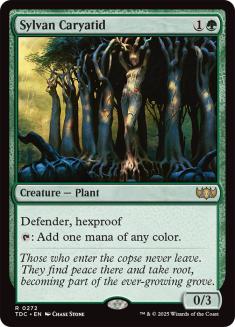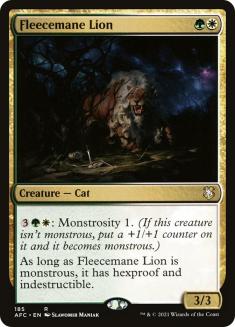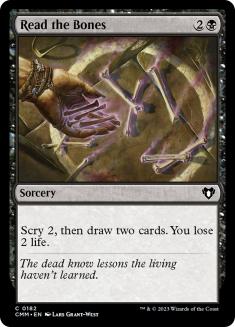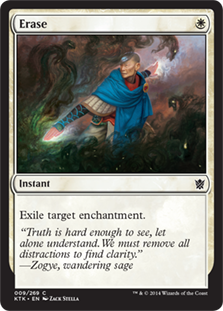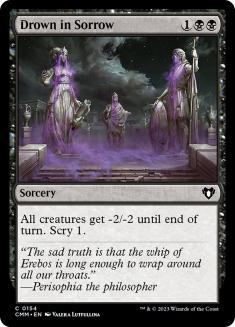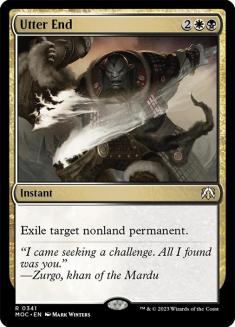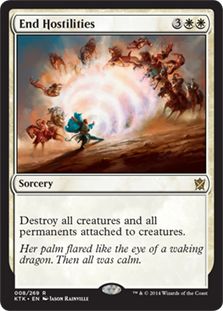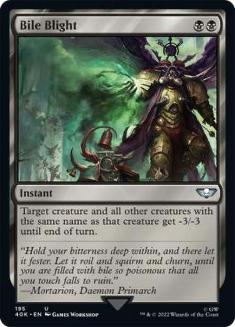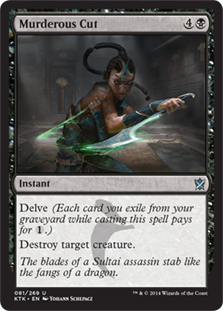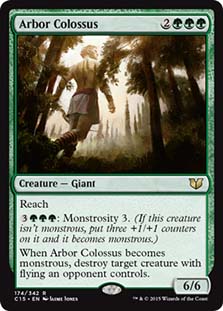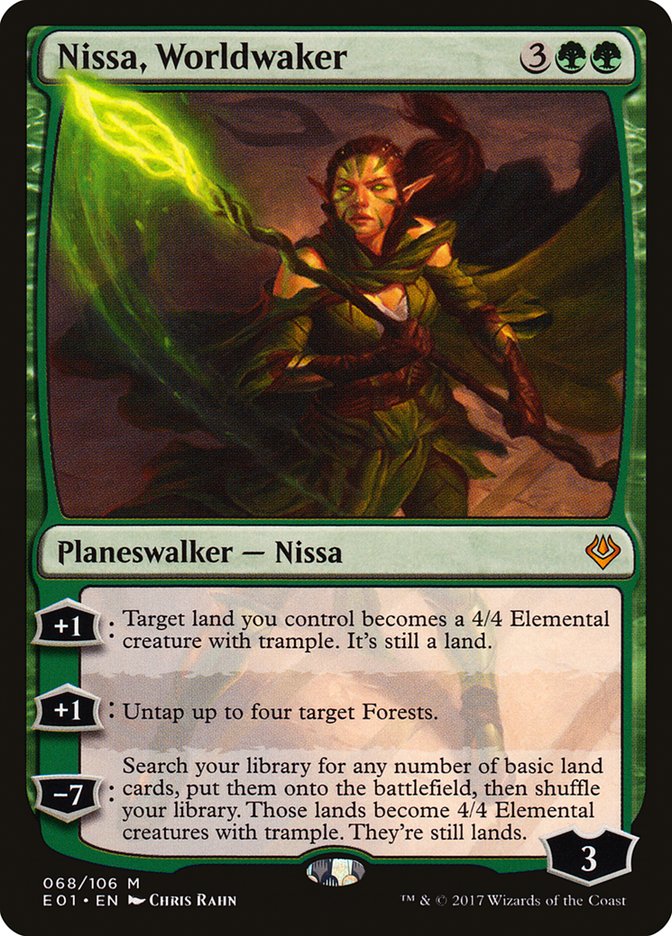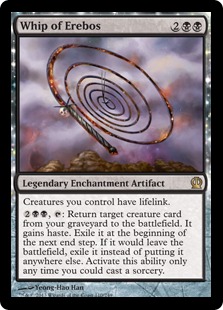It’s always interesting to me when the most popular decks are also the best decks. What does that say? Is the format actually just that obvious, or is it
just that the right early format strategy was arrived at by many people, while the format’s second month ends up far murkier?
The two most popular decks at Pro Tour Khans of Tarkir were Jeskai Aggro and Abzan Midrange. They were also two of the only three major archetypes (ten
pilots or more) to post a higher percentage of the winning record metagame (6-4 or better), compared to their day 1 percentage. The only other major
archetype to perform above expectation? U/B Control.
Let’s take a look at the relative performance of the major archetypes of Pro Tour Khans of Tarkir. The day 1 metagame tells us how popular the deck was in
the tournament, while the 6-4 or better metagame percentage gives us an idea of how popular the deck was with people that were winning. Thanks to Nick
Vigabool over at Gathering Magic for the 6-4 and better metagame numbers.
Comparing these two gives us an idea of the relative performance of each archetype. If the 6-4 or better percentage is higher than the day 1, the archetype
overperformed (was a winner), while a decrease would make it a loser. Obviously, different players had different builds and different skill levels, but
this can still give us an idea of which decks did well in general.
|
Major Archetypes |
Day 1 Metagame |
6-4 or Better Metagame |
Performance |
|
Jeskai |
23.1% |
31.0% |
+34.2% |
|
Abzan |
19.2% |
29.0% |
+51.0% |
|
Mardu |
11.4% |
4.0% |
-64.9% |
|
G/b Devotion |
8.4% |
8.0% |
-4.8% |
|
Ascendancy |
6.3% |
4.0% |
-36.5% |
|
Mono-G Devotion |
5.1% |
0.0% |
-100% |
|
U/B Control |
4.8% |
8.0% |
+66.7% |
|
G/R Monsters |
3.0% |
2.0% |
-50.0% |
|
Misc |
18.7% |
12.2% |
-34.8% |
There are lots of ways to look at the data from this event, so this is hardly the whole story. This is just a look at how often each archetype managed to
achieve winning records in Constructed. Suffice to say, this does give us some evidence about a few things.
-Jeskai and Abzan were both extremely popular, yet also did extremely well. It was not surprising to see three of each in the top 8, and then them
meeting in the finals.
-U/B Control did the best of any major archetype.
-No other major archetypes did well.
-Mono-Green Devotion does not appear to be playable, in its current form.
-G/b Devotion did okay, but that appears to be propped up by a few strong players (Reid Duke, Sam Black, etc) playing a new See the Unwritten build
that lead to four out of its five pilots finishing 6-4 or better. The non-See the Unwritten builds had a below average number of winning records.
-Mardu Midrange got absolutely killed. The deck seems to be about 40% of a Jeskai deck and 40% of an Abzan deck. It’s like Jeskai without Mantis Rider
or Dig Through Time. It’s like Abzan without Siege Rhino or green creatures.
-Ascendancy Combo did poorly, despite some impressive feature matches. With more people aiming hate towards it, I am not sure I expect its win
percentage to climb either.
-Most rogue decks did poorly.
I prepared for this event with The Pantheon, as usual. While we were a little surprised at just how popular Jeskai Aggro ended up, and how many fewer
players were on Green Devotion, we did end up with a very accurate picture of what the viable decks really were. The four decks we ended up split
between were the three winning archetypes from above (Jeskai, Abzan, and U/B Control), as well as G/b Devotion. See the Unwritten is a significant
departure from traditional G/b Devotion, and I suspect if more people had it, the archetype would have finished with a positive record (as our version
did, winning 62% of its matches).
From looking at the good decks, I concluded Abzan was the place to be, as it matches up well against Jeskai and has the most raw card quality.
Additionally, many people considered G/b Devotion to be a bad matchup for Abzan, but I knew how to turn the matchup into a favorable one, and in fact, went
on to defeat three G/b Devotion decks in the tournament.
Andrew Cuneo’s U/B Control deck was favored against my build of Abzan, but his list was built to beat green decks, and I didn’t expect all that much U/B
Control. Besides, most would not be as proficient at building control decks as Andrew (which is to say, no one is).
My list also struggled a bit with G/R Monsters, as the ways I had tuned it to beat Jeskai and G/b Devotion hurt it in that matchup. This wasn’t a big deal,
though, as I expected G/R Monsters to be relatively unpopular and to lose anyway. The strategy is just so flawed against G/b Devotion, and has so many
worse matchups across the field, particularly against aggressive decks.
I experimented with a number of more aggressive builds of Abzan (think Rakshasa Deathdealer), but generally found them to lose to other green decks
(particularly the semi-mirror). Of course, I also didn’t get all the way to four Herald of Torment, like top 8 competitor Mike Sigrist and his team; which
saw four out of four players on their build make day 2 with it.
Some early Cockatrice testing with Andrew Cuneo pointed at Hornet Queen as the trump to Abzan mirrors. It was the single biggest reason the Green Devotion
matchups were hard at level one, so taking it and incorporating it into Abzan was very compelling. It completely takes over the game while ducking under
Elspeth. It hits so hard it kills an Elspeth in one shot that came down before it, and her tokens can’t block it. The Queen, herself, is perfect at
Abyssing the leftover tokens.
It’s not just Elspeth either. Hornet Queen effectively has two names, making it fight Bile Blight better than average. It comes out ahead against Hero’s
Downfall, Siege Rhino, and Abzan Charm. It matches up well against a lot of non-Abzan cards, as well, but it fit perfectly in breaking open the mirrors.
Throughout the testing process, I experimented with many different builds of Abzan, trying to find the configuration that beat each of the major decks.
Then, when we had enough information to determine a more clear picture of the metagame, we could construct a list that was as close to optimal as possible
against the decks we’d face most.
Abzan’s card quality is so high and its sideboard options so rich, you can basically make a version that beats whatever you want. You can’t beat everything
at the same time though. So, the game becomes figuring out what cards actually swing what matchups; then, correctly weighing each possible matchup and
determining which ones are worth focusing on.
For this event, the main three decks I wanted to beat were Jeskai Aggro, G/b Devotion, and other Abzan decks. Here’s the list I settled on:
Creatures (15)
Planeswalkers (3)
Lands (25)
Spells (17)

The biggest departure from traditional builds is the inclusion of maindeck End Hostilities. I found End Hostilities to be the best trump against green
devotion strategies, and I found it surprisingly effective in the Abzan mirror. End Hostilities has some dissynergy with Sylvan Caryatid, and I actually
spent a lot of time testing Satyr Wayfinder in that slot.
The night before the tournament, I was still unsure which way I’d lean, and one of my leading options was a 2/2 split. That sounds crazy, I know, but my
thinking was that against G/b Devotion, the mirror, and control, I didn’t want any Caryatids in my deck, but needed more than just the 25 land to function.
With a 2/2 split, I could board out the two Caryatids in those matchups, while keeping the two Wayfinders.
Why not just use four Wayfinders then? Because Sylvan Caryatid is a much stronger card. There are plenty of matchups where I’d rather have the Caryatid,
and against random opponent, the stronger card is preferred. In the end, I remembered the advice I give others:
“When in doubt, play the stronger card.”
I had originally been unsure of how I’d make the mana work after sideboarding. Would I just have to suck it up and keep a couple Caryatids in? Realizing
Read the Bones was fantastic against G/b Devotion was the turning point. If I was boarding in three Read the Bones in the matchups where Caryatid was bad,
I could partially crutch on it to get me out of tight mana draws.
I already had one Read the Bones in my sideboard to get extra card draw for attrition-y matchups, like Abzan and control. In testing against G/b Devotion,
I found myself getting ground out due to cards like Eidolon of Blossoms, Doomwake Giant, Genesis Hydra, and See the Unwritten. I had lots of good
one-for-ones, like Hero’s Downfall and Erase, lots of good sweepers, like Drown in Sorrow and End Hostilities. What I really needed was more card draw, so
I could actually function like a control deck against them.
Once I realized this, I added two more Read the Bones to my sideboard and cemented the G/b Devotion matchup. My typical sideboard plan against them is
something along the lines of:
Out:
Also, two out of three of a Siege Rhino, a Hornet Queen, and the Bile Blight.
In:
The one Fleecemane Lion maindeck looks a little odd, but it’s not completely without rhyme or reason. In trying to understand what’s important in the green
devotion matchup, one of the conclusions I reached was that Fleecemane Lion wasn’t good there. Also, it was weak against G/R/x monsters decks, unlike in
Block, where it was vital for fighting planeswalkers. Elvish Mystic and the overabundance of midsize creatures that trump the Lion make it a far less
reliable tool. Additionally, Sarkhan, the Dragonspeaker takes it out at a profit, and Nissa is a bit awkward to try to fight.
I still liked Fleecemane Lion against Abzan and control, but it lost some value against aggressive decks, as well. Block aggro decks were often short on
removal, and Brimaz meant what removal they had was over-taxed. Now, a lot of people get removal that incidentally kills Fleecemane Lion, and with everyone
targeting Mantis Rider and Goblin Rabblemaster, answers to the Lion would be in abundance. Besides, when facing the Mantis Rider/Goblin Rabblemaster
players, they not only have a lot of answers, they can easily race it with cards like Seeker of the Way, Mantis Rider, and Jeskai Charm to undo all of its
damage.
I was going to play zero Lions maindeck, but sideboard space was tight and I was trying to find ways to get more of the sideboard cards in the maindeck.
That’s why there’s already a Bile Blight, a Drown in Sorrow, an Utter End, a Murderous Cut, and End Hostilities. Even in the matchups where these cards are
not well suited, you can often turn the first one you draw into a card. Abzan really is a 75 card deck and should be viewed as such.
Linking to the Lion question was the Whip of Erebos vs Sorin, Solemn Visitor debate. I wanted at least one of these two maindeck, but went back and forth
between them. Sorin was clearly better when you had Lions, but I loved the Whip when I was on Wayfinders. The interaction between Whip and Hornet Queen or
Siege Rhino is huge. However, once I found myself without Lions or Wayfinders, I wasn’t sure which to use. Eventually, I decided to go with zero in the
maindeck, ironically swapping it with one of the Lions in the sideboard.
I ended up settling on the Whip, wanting another dimension to attack from after sideboarding, but I think in retrospect, Sorin might have been slightly
better. It’s a close call, and both succeed at gaining tons of life with lifelink the turn you play them. I just like that Sorin is a little better when
you have nothing going on, and that Sorin costs less mana to operate.
As for moving the Lion to the maindeck, it was that or an Arbor Colossus, as I wanted one more proactive card maindeck. End Hostilities and Hornet Queen
already meant my curve was a fair bit higher than most Abzan decks, so I err’ed on the side of the cheaper card, a decision I was pretty happy with.
Looking back on the Caryatid vs Wayfinder debate, I believe it was actually correct to play Caryatids here. Even though the Wayfinder only misses 10% of
the time, it can be brutal when it does. Besides, access to Read the Bones made the sideboard considerations no longer a problem.
Siege Rhino and Courser of Kruphix were never really in question, as they are the two strongest cards in the deck. I think you can totally get away from
Courser in an aggro deck, but in a midrange build, it’s the best card.
This leaves Elspeth, Sun’s Champion and Hornet Queen, and I was definitely pleased with my split. I had considered sideboarding a third Hornet Queen, and
if I played Wayfinder, Whip would have liked it. But as it was, there wasn’t room. In retrospect, I am even more into exactly two Queens, as Hushwing Gryff
hurts decks that are overly reliant on it.
I experimented with every mix of removal spells I could think of, but in the end, I found them all to be basically the same power level except Hero’s
Downfall. There are more Abzan Charms than other types, as the ability to cycle into Sign in Blood gave me more flexibility in the matchups where removal
is bad. I didn’t play the full four, however, as drawing two Abzan Charms can be surprisingly awkward against some aggressive decks. It would have been
fine to play four, but Bile Blight, Murderous Cut, Utter End, and Drown in Sorrow add such potent dimensions to the deck. Playing a mix makes it harder to
play against you.
We went through a phase in testing where people were off Thoughtseize, but we eventually came back around once decks were more refined. It is particularly
important against Jeskai Aggro, where the information lets you decide which removal spell to play on which creature. Additionally, their deck has
relatively few threats, and they don’t always have a lot of answers to Siege Rhino. Sometimes, you Thoughtseize and take their only threat. Other times,
you Thoughtseize their Disdainful Stroke that was going to stop your Rhino, and save your Bile Blight to try to hit two Mantis Riders.
Thoughtseize is also great against G/b Devotion, as they have a small number of power cards and an awful lot of mana. Take the Hornet Queen out of their
hand, and sometimes you only have to kill two threats before they are stuck sitting there with a ton of mana and nothing to use it on.
The manabase is actually pretty finely tuned, with important reasons for various numbers that are relevant for working on other decks, as well. Windswept
Heath is absolutely incredible with Courser of Kruphix, so I knew I wanted to bend my manabase to support it fully. Three Forests ensures I can also fetch
a land to help cast Hornet Queen, and two Plains does the same for Elspeth, Sun’s Champion. With just five targets to find, there is a risk of running out
going long, but if you keep track, you can save the Heath to use as a shuffle for Courser, and Urborg can make it produce mana.
Four Windswepth Heaths, three Forests, and two Plains is a lot of non-black lands, so I knew I wanted the rest of the manabase to produce black (which is
still only sixteen sources). Normally, we’d be able to get away with less, but part of my plan involved sideboarding out Caryatids, so the deck needed to
be able to operate without them.
I’ve built a lot of decks full of three-cost spells that rely heavily on tapped lands, and in my experience, it’s not about how many tapped lands you play.
It’s about how many untapped lands you play. My optimal number is fourteen, but sometimes you have to make due with less when you have no other options.
This time around, there were a lot of options, so I targeted fourteen untapped lands, meaning eleven tapped (once I concluded 25 land was the ideal total).
Temples vs tri-lands is an interesting one, but the short answer is that Temples are much stronger cards. In general, I recommend playing as many temples
as you can get away with and as few tri-lands as you need. In this case, I needed all my tapped lands to produce black, so I had a cap of eight, which I
ended up going with.
Abzan decks less reliant on End Hostilities and Elspeth can get away with one less Plains though. Also, if you’re not boarding out Caryatid half the time,
you don’t need quite as much black. Mana Confluence is a fine option in aggressive builds, but I think there’s too much burn in the format to want it in a
controlling build.
Urborg, Tomb of Yawgmoth is an invaluable addition as it not only can fix double black out of nowhere, it also makes painlands stop damaging you and
fetchlands work without shuffling (yet). Yes, sometimes it helps your opponent, but it helps us so much more often. I love the first copy.
The sideboard is the result of a lot of agonizing over how to jam the 93 cards I wanted to build every optimal version for every matchup into a 75 card
package. This involves a lot of finding second best options that can do double duty in different roles.
For instance, I would have loved to have more Nissas against control, but I wasn’t bringing it in against enough other opponents to justify the space. As a
result, I was settling for bringing in Arbor Colossus, despite it being a mediocre threat in that matchup. It’s at least okay, and really shines against
Jeskai Aggro and G/R Monsters.
In general, my sideboard against control decks is something along these lines (though it varies dramatically, depending on their build):
Out:
In:
Depending on the matchup, I might bring in the Whip of Erebos, and I might trim a Hornet Queen or a Downfall. The main thing is taking out most of the
removal and filling the deck with more threats. I liked Mistcutter Hydra against U/W, but when it became clear that U/B and Sultai would be more popular, I
moved away from it.
My basic plan against Jeskai Aggro was:
Out:
Also:
-2 or -3 Abzan Charms (depending on their build)
-1 Elspeth or Hornet Queen (depending on Hushwing Gryff)
In:
Depending on their build, sometimes I would cut the Lion, other times add more. Utter End was another card that sometimes I want more of (if they have a
lot of Banishing Light types) and sometimes I want to cut. This is really a matchup where you have to look at the texture of the games, not just follow a
sideboarding guide.
Overall, I was pleased with my deck choice for this event, even if my play left something to be desired. I finished 6-4 in Constructed (10-6 overall), good
for 49th place. My 6-2 day 1 was bittersweet, as I punted at least one match and gave myself worse chances in the other. My day 2 was a much worse record
(4-4), but three of my losses were heavily manascrew/mulligan related.
Still, I think it’s silly to focus on the matches you lose to manascrew when I probably could have won at least two of my matches the way the cards fell,
with chances in a third. It’s not like I didn’t get some wins from manascrewed opponents myself. Outside of the pairings being totally different if I
didn’t punt, I could have gone at least 12-4 with the way the cards fell for me, giving me reasonable chances at top 8 considering how many of my wins were
on day 1.
I drafted well at this event and had a great deck, but I wasn’t at the top of my game for the competition itself. I’ve had a lot of life hitting me at the
same time lately. Fatigue is a serious threat to a Magic player’s ability to compete, and it’s the single biggest area I need to focus on going into the
World Championships.
I appreciate all the positive energy people sent my way this weekend, and I am looking forward to stepping things up at GP LA coming up. The World
Championships are just on the horizon, and I am going to do everything in my power to bring my absolutely tippity-top A-game to the event.
Do I recommend Abzan?
I Abzan-lutely do.

